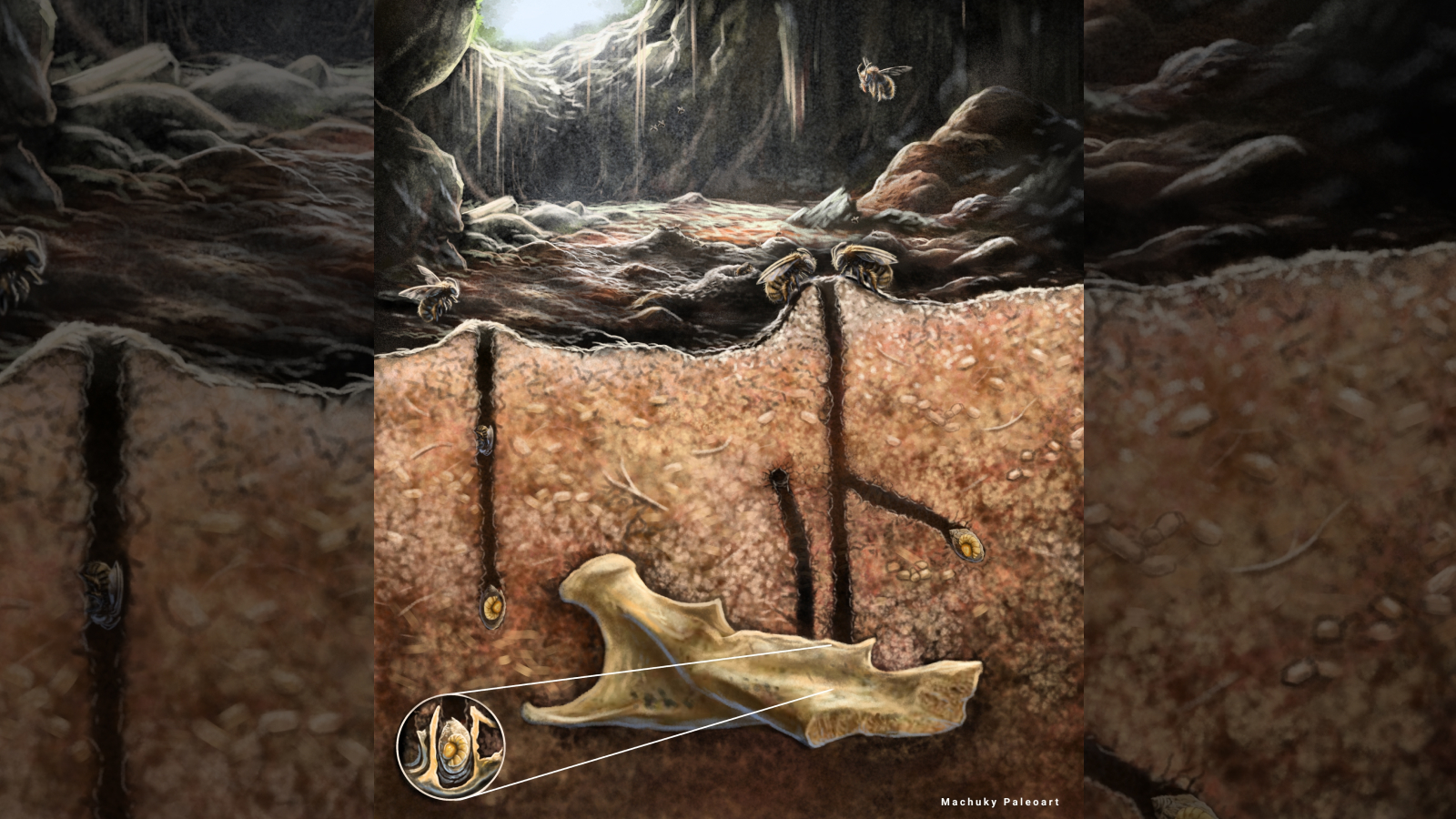Autism Truths and Myths: The State of the Science (Op-Ed)


Francesca Happé is president of the International Society for Autism Research (INSAR) and director of the MRC Social, Genetic and Developmental Psychiatry Centre at the Institute of Psychiatry, Psychology and Neuroscience at King’s College London. She contributed this article to Live Science's Expert Voices: Op-Ed & Insights.
Autism is everywhere. Characters with autism, especially high-functioning autism or Asperger Syndrome, abound in TV shows, films and novels. Think of Sheldon on "The Big Bang Theory," Oskar in "Extremely Loud and Incredibly Close," or Christopher in "The Curious Incident of the Dog in the Night-Time." Writers love autistic protagonists for their wry take on how illogical "neurotypical" (non-autistic) people are, and find the autistic genius a useful plot device for solving unsolvable riddles.
Autism is a myth-magnet. You can barely look at a newspaper, magazine or newsfeed without finding something about autism: a new "miracle cure," a claim that "the gene for autism" has been discovered, or talk of scientists creating autistic mice. The reality, of course, is very different.
Getting to the truth of autism
This month, nearly 2,000 scientists and researchers will gather in Salt Lake City for the International Meeting for Autism Research (IMFAR) 2015. They will discuss and debate the latest findings about this most mysterious of conditions. Since autism was first named, a little more than 70 years ago, much has been learned — but many questions remain. [Autism's Rise: Researchers Look at Why Cases Are Increasing ]
Autism is a neurodevelopmental condition characterized by impaired social and communication abilities, and rigid and repetitive behavior and interests. One of the major challenges to research is that the manifestation is so varied, giving rise to the notion of the autism "spectrum." One child with autism may be silent, aloof (not seeking out his parents even when hurt or upset) and apparently locked into repetitive play, such as lining up toys or spinning coins for hours on end. Another individual may talk incessantly about his own special interest in football scores, be indiscriminately over-friendly, and unable to tell the difference between a joke and a lie. The wide range of manifestations makes it hard to research causes or treatments for autism spectrum disorder (ASD). Instead of a gene for autism, for example, there are very likely hundreds of genes that can combine in dozens of ways to predispose a child to ASD. Many researchers now talk about "the autisms."
Among the topics that will be exercising minds at IMFAR 2015 — the largest international meeting focused entirely on autism — are biomarkers, including neural signatures, that might help researchers divine more homogeneous subgroups within ASD. There are without doubt many different routes to ASD, and one panel session at IMFAR will consider how genomic discovery might lead us to discover genetically defined autism subtypes.
Get the world’s most fascinating discoveries delivered straight to your inbox.
Are there treatments for autism?
The purpose of genetic research is to uncover mechanisms that might be modifiable, to optimize interventions for individuals with ASD. Developing new ASD pharmacological treatments is the goal of the European Autism Interventions — A Multicenter Study for Developing New Medications (EU-AIMS), supported by the largest single grant for autism research anywhere in the world. The latest findings from this $33.6 million (30 million euros) academic-industry collaboration will be presented at IMFAR 2015 in the panel Translating Cellular and Animal Models of Synaptic Gene Deficits to Large-Scale Clinical Studies, and Jeremy Veenstra-Vander Weele, Mortimer D. Sackler Associate Professor of Psychiatry at Columbia University will also present his latest work on pathways to new treatments for ASD.
Our most effective interventions for ASD are currently educational and behavioral approaches. Sally Rogers, professor of psychiatry and behavioral sciences at UC Davis MIND Institute will reflect on 50 years of ASD early intervention science, which has demonstrated that remarkably good outcomes are possible for people with ASD.
Much of what makes life hard for people with ASD is not the autism itself, but what often accompanies autism, including epilepsy, intellectual disability, sleep problems, anxiety and depression. Mental health issues may get worse in adolescence or adulthood, even when autism symptoms may be becoming more subtle. Presentations at IMFAR 2015 will cover clinical and epidemiological perspectives on co-occurring psychiatric disorders across the life span, and interventions for anxiety in ASD. [Kids with Autism Are More Likely to Have Gastrointestinal Problems ]
Autism is not just about children or males
Researchers now widely recognize that ASD is not a rare condition and that perhaps 1 percent of the population has autism. The popular conception of autism is of the child with the far-away gaze, and the vast majority of published research is on children with ASD. However, it's important to remember that most people with autism are adults.
Concentration on early diagnosis and intervention for ASD has been important, but can leave the impression that later intervention is impossible or ineffective. In fact, little is known about ASD in older adults, and equivalently intensive interventions could also lead to major improvements in functioning and well-being late in life. It is therefore encouraging that new research will be presented at IMFAR 2015 on adult interventions, aging and factors associated with adult outcomes in ASD.
As examples in popular media illustrate, the stereotype of autism is male. Males outnumber females with ASD perhaps 4 to 1, with the sex ratio more skewed at the high-functioning end of the spectrum and less unbalanced among those with intellectual disability. The source of this imbalance is not known, although it is not unique to ASD: the developing male appears to be generally more vulnerable.
Sex differences in ASD is a growing topic, and new research will be presented at IMFAR 2015. Understanding the origins and nature of sex differences is important to improve recognition and services for girls and women on the autism spectrum. Increasingly, women with ASD are telling their own stories, and researchers attending IMFAR 2015 will benefit from a panel session focused on the first-person experience of people with ASD. Anthropologist and father of a daughter with ASD, Roy Richard Grinker, director of the Institute for Ethnographic Research at the George Washington University, will open the meeting with a keynote presentation, "Who Owns Autism? Exceptionalism, Stigma, and Stakeholders."
The future of autism
For autism research to take the next leap forward, we need perhaps three big initiatives. First, we need genetic research on the scale seen for schizophrenia : tens and eventually hundreds of thousands of participants, with good information about each one's skills and difficulties. This scale of research is needed to deal with that heterogeneity in the autism spectrum, in order to discover gene pathways, and hence mechanisms, to optimize the outcome for each individual.
Second, we need people with autism and their families to donate brain tissue when they die. These two aims are underway, thanks to initiatives (MSSNG and Autism BrainNet) funded by Autism Speaks and the Simons Foundation.
The third initiative is arguably even more important: Create open-access, globally accessible diagnostic tools for low-income settings. More than 80 percent of research is carried out in high-income countries, with a bias of samples for wealthy white individuals, but 80 percent of those living with autism are in low-income countries. Diagnostic tools are currently highly expensive and impractical in these settings.
Making ASD diagnosis and services available to all is not only a moral imperative, it is a scientific one — establishing rates and developmental trajectories in very different environments will shed light on the etiology and nature of autism. It is time for autism researchers to look outwards and think globally.
Follow all of the Expert Voices issues and debates — and become part of the discussion — on Facebook, Twitter and Google+. The views expressed are those of the author and do not necessarily reflect the views of the publisher. This version of the article was originally published on Live Science.



